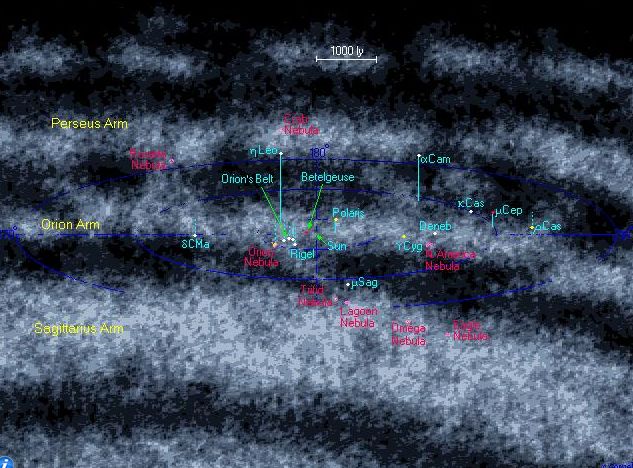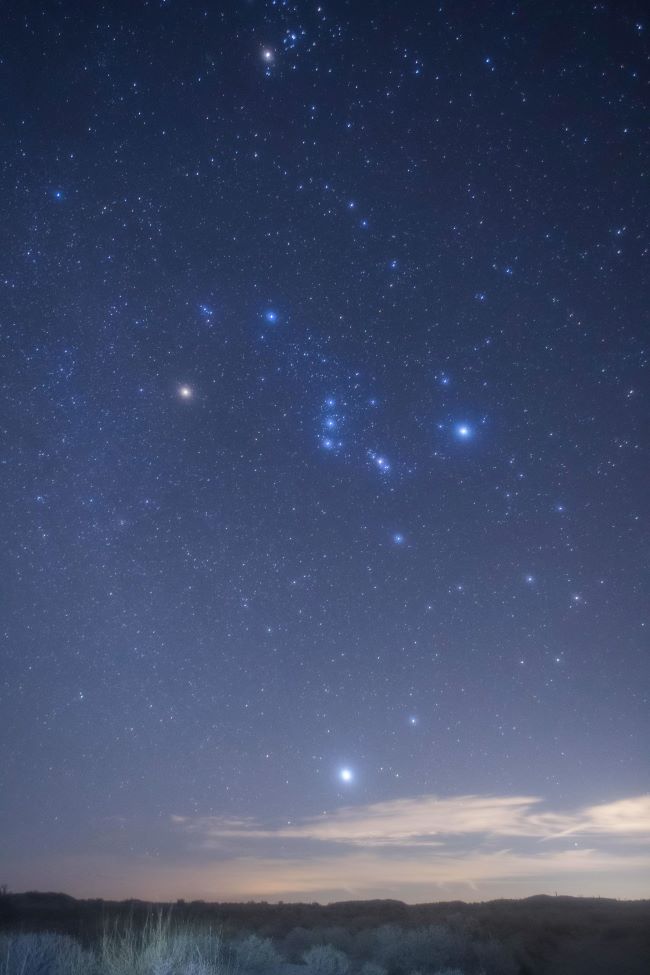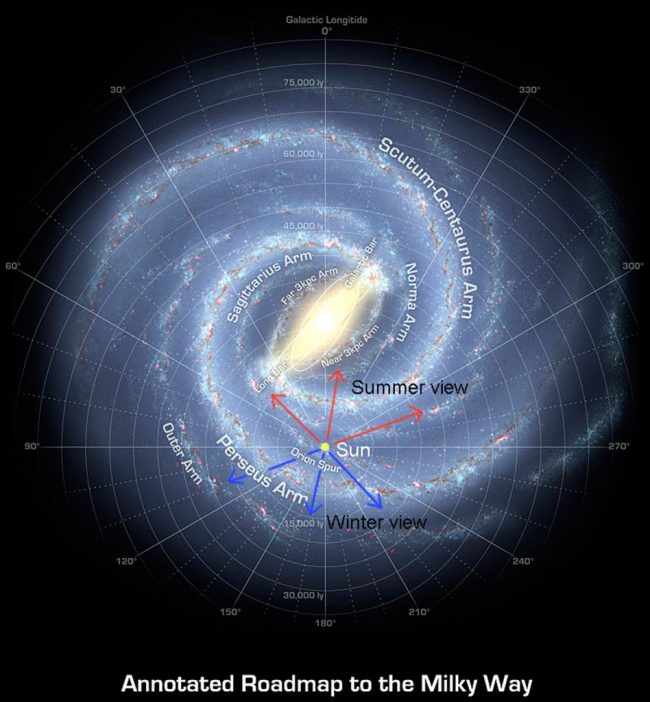Why are the winter stars so bright?
It’s winter in the Northern Hemisphere (summer in the Southern Hemisphere), and if you look outside in the evening you’ll see many bright stars. Beginning around now, the evening sky as seen from around the world will look clearer and sharper than it did 6 months ago, assuming no clouds are in the way.
And beware, right now the bright planets Venus, Jupiter and Mars are in the evening sky and shining among the bright stars visible right now. Venus and Jupiter outshine the brightest stars. And Mars is roughly the same brightness as our brightest stars. How can you tell if it’s a planet or a star? Stars twinkle, planets do not.
On December, January and February evenings our evening sky faces away from the center of our Milky Way galaxy. Instead, we look toward our galaxy’s outskirts at this time of the year. There are fewer stars between us and extragalactic space now. We’re also looking toward the spiral arm of the galaxy in which our sun resides – the Orion Arm – and toward some gigantic stars. These huge stars are relatively close to us, within our own galactic neighborhood and local spiral arm, so they look bright.
Comparing the winter and summer sky
Consider the sky at the opposite time of the year. In June, July and August, the evening sky seen from the entire Earth is facing toward the center of the Milky Way galaxy.
The galaxy is about 100,000 light-years across. Its center is some 25,000 to 28,000 light-years away from us here on Earth. We don’t see into the exact center of the Milky Way, because it’s obscured by galactic dust.
But during those Northern Hemisphere summer months (Southern Hemisphere winter months), as we peer edgewise into the galaxy’s disk, we’re gazing across some 75,000 light-years of star-packed space. (75,000 light-years is the distance between us and the center, plus the distance beyond the center to the other side of the galaxy.)
Thus – on June, July and August evenings – we’re looking toward the combined light of billions upon billions of stars. The combined light of so many distant stars gives the sky a hazy quality.
The Orion Arm
Our spiral arm of the galaxy is the Orion Arm. It also goes by the name of the Orion Spur, Local Arm, Orion-Cygnus Arm or the Local Spur. It’s not one of the primary spiral arms of the Milky Way, just a “minor” spiral arm. And our local Orion Arm is some 3,500 light-years across. It’s approximately 10,000 light-years in length. So our entire solar system resides within this Orion Arm. We’re located close to the inner rim of this spiral arm, about halfway along its length.
Perhaps you know the bright stars of the prominent constellation Orion the Hunter? This constellation is visible in the evening during Northern Hemisphere winter (Southern Hemisphere summer). The stars of mighty Orion also reside within the Orion Arm of the Milky Way. In fact, scientists named our arm of the galaxy for this constellation.


Bottom line: In December, January and February, we are looking away from the thick stars and clouds of the Milky Way’s core toward the Orion spiral arm, where bright stars reside.
Read our previous article: Latest sunrises late December and early January
